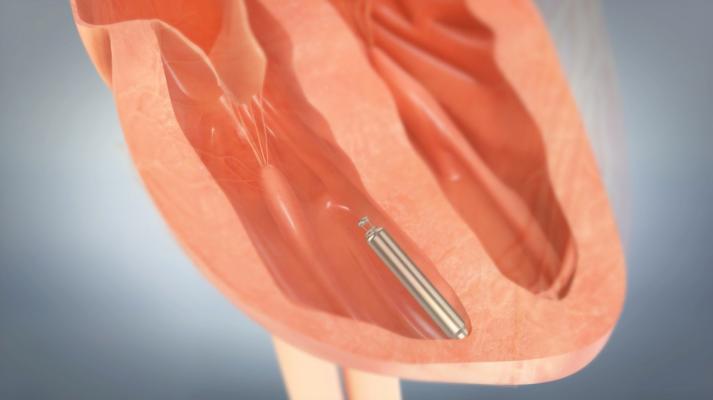
September 9, 2015 — St. Jude Medical Inc. announced primary results from the LEADLESS II study that confirm the positive benefits of the Nanostim leadless pacemaker for patients in need of a single-chamber ventricular pacemaker. The study also demonstrated the Nanostim leadless pacemaker’s longer-term retrievability and the device’s significant projected battery longevity.
The LEADLESS II investigational device exemption (IDE) study is the largest published study to date to evaluate leadless pacing technology, having enrolled 526 patients at 56 centers across the United States, Canada and Australia. Results from the study were published online in The New England Journal of Medicine and presented during a Hotline session at the European Society of Cardiology (ESC) Congress 2015.
“We are excited to share the results of LEADLESS II, which continues to grow the body of evidence supporting the safety and efficacy of the Nanostim leadless pacemaker,” said Vivek Reddy, M.D., the study’s principal investigator and director of electrophysiology services at The Mount Sinai Hospital in New York. “The LEADLESS II study results are advancing our understanding of leadless pacing technology and highlighting a number of benefits for physicians seeking a minimally invasive, leadless option for patients in need of permanent, single-chamber pacing therapy.”
After six months, data from LEADLESS II showed the trial met both endpoints for primary effectiveness (appropriate pacing and sensing) and safety (freedom from serious adverse device effects). In addition, data from LEADLESS II also demonstrated:
- Retreivability is a core benefit of the Nanostim leadless pacemaker. Over the duration of the study, LEADLESS II demonstrated that retrieval of the implanted device was successful in 100 percent of patients requiring retrieval without any associated complications; and
- Based on data from LEADLESS II, the device’s battery could be projected to last an average of 15 years, and possibly projected as high as 21 years depending on pacing needs. The longevity of the Nanostim device has been estimated to be 9.8 years at 100 percent pacing.
Within the LEADLESS II study, a total of 22 serious adverse device effects were observed over six months, including cardiac perforation, device dislodgement, and elevated pacing capture thresholds at rates of 1.3 percent, 1.7 percent, and 1.3 percent, respectively, which is consistent with traditional pacemakers.
The device originally received CE Mark in October 2013. Unlike conventional pacemakers that require more invasive surgery, the Nanostim leadless pacemaker is implanted minimally invasively via the femoral vein. The system is implanted with the smallest available leadless technology delivery system, which includes the delivery system catheter and an 18 F introducer. This eliminates the surgical pocket and leads, which represent the most vulnerable component of traditional pacing systems. The device is entirely self-contained and at approximately 1.5 inches long and under 6mm in diameter is less than 10 percent the size of a conventional pacemaker.
Reddy is the chair of the steering committee for the LEADLESS II trial and has received consulting fees from St Jude Medical.
For more information: www.sjm.com


 April 24, 2024
April 24, 2024 








